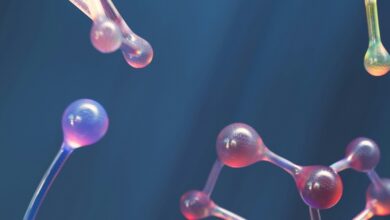The Protein Powering Human Development

Nibrin (NIPBL) is a protein encoded by the NIPBL gene in humans. This protein plays a crucial role in Notch signaling, a fundamental cellular signaling pathway involved in cell-cell communication, which influences a wide array of developmental processes. The Notch pathway is known to guide binary cell fate decisions in the course of embryonic development and tissue homeostasis. It is comprised of the Notch receptors (NOTCH1-4) and their ligands (JAG1, JAG2, DLL1, DLL3, DLL4).
Let’s delve into the world of NIPBL and uncover what makes it so vital, and how cutting-edge research is shedding new light on its mysteries.
The Discovery of NIPBL
The story of NIPBL begins in the early 2000s, a time of great upheaval in the scientific community. The Human Genome Project, a monumental endeavor to map our complete DNA sequence, was nearing completion. This vast undertaking revealed thousands of novel genes, previously unknown. Among these was NIPBL, a mystery wrapped in an enigma. Initially, its purpose was unclear, but clues pointed to a role in embryonic development, a time of rapid growth and transformation.
NIPBL’s Role in Development
As research into NIPBL deepened, its importance became apparent. This protein is a key player in a process called Notch signaling. Think of Notch signaling like a crucial communication channel in a developing embryo. It helps cells decide what to become and where to go, guiding the formation of tissues and organs. NIPBL acts as a booster, amplifying these signals to ensure they’re heard loud and clear.
Without sufficient NIPBL, this communication falters. This leads to developmental disorders, where tissues and organs don’t form correctly. One such condition is Cornelia de Lange syndrome, characterized by intellectual disability, physical abnormalities, and a range of health problems. Mutations in the NIPBL gene are the primary cause, highlighting the protein’s critical role.
Unraveling NIPBL’s Secrets
Despite progress, much about NIPBL remains unknown. How exactly does it enhance Notch signaling? What are its other partners in the cell? These questions have driven researchers to dig deeper. Recent breakthroughs have begun to lift the veil on NIPBL’s mechanisms, opening exciting avenues for further study.
A 2022 study published in the journal Science shed remarkable light on NIPBL’s inner workings. Using cutting-edge structural biology techniques, scientists visualized NIPBL’s molecular structure in unprecedented detail. They found it acts as a molecular scaffold, bringing together key components of the Notch signaling pathway. This close proximity amplifies the signals, ensuring clear communication between cells.
But that’s not all. The study also revealed surprising flexibility in NIPBL’s structure, allowing it to adapt to different situations. This flexibility may be crucial for fine-tuning Notch signals during development, where timing and intensity are everything. These findings paint NIPBL as a dynamic conductor, expertly orchestrating the complex symphony of development.
The Future of NIPBL Research
The recent breakthroughs are just the beginning. With NIPBL’s structure and function coming into focus, scientists can now ask even more targeted questions. How do specific mutations disrupt its role, leading to developmental disorders? Can we find ways to boost its activity, perhaps treating these conditions? The possibilities are vast and thrilling.
The study of NIPBL is a testament to human curiosity and the power of scientific discovery. From its initial identification to the latest revelations, our understanding of this protein has come a long way. Yet, as with all great scientific stories, the most exciting chapters may still be waiting to be written. As researchers press on, uncovering NIPBL’s secrets, they bring us closer to grasping the very essence of human development.





